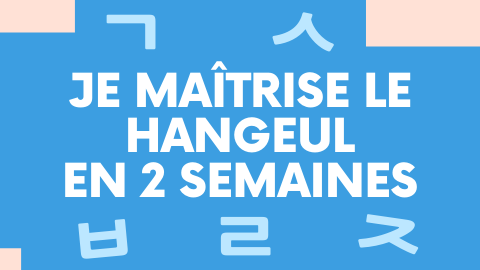Cours de coréen ᚛ Level 1 - My First Steps in Korean (Lessons 1 to 30) ᚛ Leçon 20 - The Subject of a Sentence in Korean [이 / 가]
The Subject of a Sentence in Korean [이 / 가]
이 and 가 are the particles that mark the subject of a sentence, in the same grammatical function as in English. The subject is what performs the verb.
Function of 이 / 가 in Korean
Like all particles, 이 and 가 are placed just behind the noun phrase which they correspond to.
- If the noun phrase ends in a vowel: [Subject]가
- If the noun phrase ends in a consonant: [Subject]이
언니가 공부합니다.
Breaking down the sentence:
- 가 indicates the subject of the sentence, which is 언니 (= big sister)
- 공부합니다 is the verb 공부하다 (= to study), conjugated in the present tense in the formal style
So, when forming the sentence in English, we get:
→ My older sister is studying.
불고기가 맛있어.
Breaking down the sentence:
- 가 indicates the subject of the sentence, which is 불고기 (= bulgogi (Korean dish))
- 맛있어 is the verb 맛있다 (= to be delicious), conjugated in the casual present tense
So, when forming the sentence in English, we get:
→ The bulgogi is delicious.
길이 넓어요.
Breaking down the sentence:
- 이 indicates the subject of the sentence, which is 길 (= the road)
- 넓어요 is the verb 넓다 (= to be wide), conjugated in the polite present tense
So, when forming the sentence in English, we get:
→ The road is wide.
손이 아파요.
→ My hand hurts. (lit: My hand is sore.)
민지가 너를 좋아해.
→ Minji likes you.
돈이 없어요.
→ I have no money. (lit: Money does not exist.)
Note: after someone's name that ends in a consonant, we do not add 이 but 이가.
- 지민 → 지민이가
- 정국 → 정국이가
Particle Omission
Lastly, in everyday conversations, as with the topic particle 은 / 는, the particle 이 / 가 may be omitted in order to simplify sentences if there is no ambiguity as to what the noun phrase that would precede it is. Generally, these are short sentences in which there is no doubt of the meaning of the words.
불고기가 맛있어.
불고기 맛있어.
→ The bulgogi is delicious.
But if there is any hesitation, keep it!
Exercises
En savoir +
Pour toute personne souhaitant apprendre le coréen, la maîtrise du Hangeul, l'écriture coréenne, est un passage obligatoire. Cependant, bien comprendre l'utilisation de ces nouveaux caractères, leur véritable prononciation, leur fonctionnement dans les mots et surtout les retenir pour pouvoir les lire parfaitement à long terme est une tâche souvent difficile pour les apprenants du coréen.
Je maîtrise le Hangeul en 2 semaines est un programme de 14 jours pendant lequel vous apprenez jour après jour tous les secrets des caractères coréens pour pouvoir les maîtriser et ne plus jamais les oublier. Chaque jour, découvrez le Hangeul à travers des cours complets et de très nombreux exercices de lecture et d'écriture. Un mode d'entraînement en ligne à l'infini vous permettra de vous exercer autant que vous le souhaitez jusqu'à atteindre l'excellence.
En savoir +

